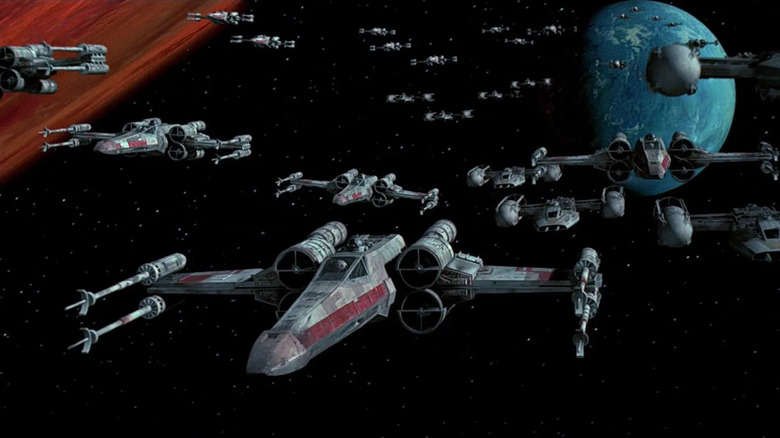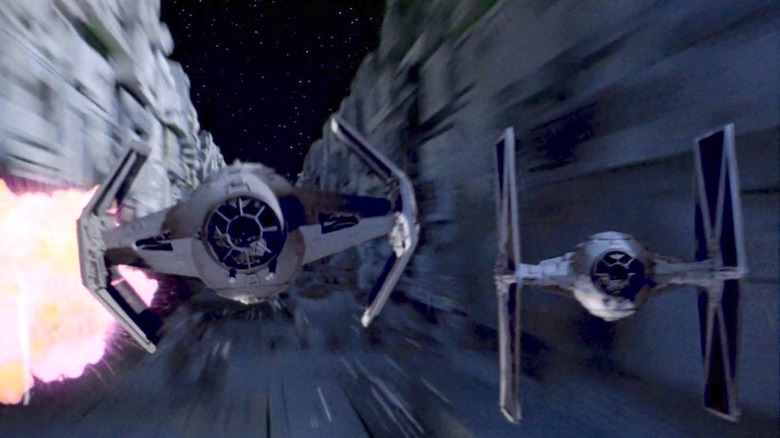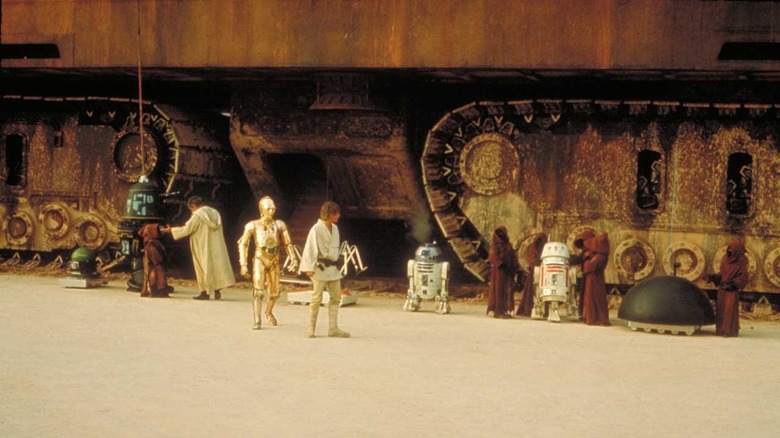Source: SlashFilm
Published and curated from SlashFilm Read More

In the world of “Star Trek,” the average Starfleet vessel can zip through the galaxy as fast as warp 9. The warp speed number refers to an exponential speed scale where warp 1 is the speed of light, warp 2 is about eight times the speed of light, and warp 9.99 is over 8,000 times the speed of light. A lot of these numbers are mentioned frequently throughout various “Star Trek” shows. Warp 10 is the impossible number, as one would essentially reach infinite velocity, essentially passing through every point in the universe simultaneously. The makers of “Star Trek” were forced to consider warp speed — a fictional propulsion device, mind you — when measuring the actual size of the Milky Way galaxy. The Milky Way is about 100,000 lightyears across. The closest star to Earth (other than Sol), is Proxima Centauri, which is 4.25 lightyears away.
“Star Trek,” in seeking new life and civilizations, couldn’t spend four years poking along at light speed before their next mission. Hence, warp drive.
In the 1980 “Star Wars” sequel “The Empire Strikes Back,” Luke Skywalker (Mark Hamill) flies a one-person attack craft called an X-Wing. During the movie, he flies that ship to a distant swamp planet called Dagobah. They establish that the ships in “Star Wars” travel at the speed of light. Dagobah must have been incredibly close if a small attack craft, presumably not equipped with light-speed engines, can just zip over there. Indeed, the galaxy in “Star Wars” must be tiny compared to the Milky Way, if everyone can travel anywhere only going 670,616,629 mph.
“Star Wars” creator George Lucas, however — like most people — doesn’t much care. In a 2005 interview with the Boston Globe, Lucas declared “Star Wars” science to be unimportant.
The Science Of Star Wars

“Star Trek” and “Star Wars” main difference may be in their respective approaches to technology. “Star Trek” has mostly endeavored to explain how their fantastical technology works, giving ships and machines a tactile quality; a Trekkie can imagine how to operate an L-CARS computer panel or adjust the Enterprise’s shields. There is a practical element to Trek tech. On “Star Wars,” a ship works because it works. While there may be extensive technical manuals and expanded universe lore that explains the way a Star Destroyer works, it’s more important as a setting. A deep-cut Starwoid might be able to tell all about the qualities of kyber crystals, but none of that is as important as the dramatic impact of seeing a space wizard wield a laser sword.
When it came to the real-world inspirations for “Star Wars,” Lucas was blunt, saying that he preferred a dramatic, historical, or literary approach. Technology was incidental. He even admitted to not paying a lot of attention in school. Lucas said:
“I’m not much of a math and science guy. I spent most of my time in school daydreaming and managed to turn it into a living. When I was making ‘Star Wars,’ I wasn’t restrained by any kind of science. I simply said, ‘I’m going to create a world that’s fun and interesting, makes sense, and seems to have a reality to it.’ And a lot of it came from our literary history, our social history, like robots and whatnot. Part of it’s based on mythological motifs, the politics are based on history. There’s a lot of cultural reality to it that isn’t necessarily scientific but is more social.”
The way the characters relate matters more than how their landspeeders function.
Internal Logic

For Lucas, he was only concerned that “Star Wars” abide by its own internal logic. It didn’t matter how something worked, so long as it worked the same way consistently. A lot of “Star Wars” tech may not make much sense from a practical, real-world perspective, but it made sense in its own fantasy universe. How are mini holograms a better way of communicating than mere audio? And why can’t they broadcast audio across the galaxy to keep the populace informed? To answer, because it looks cooler, and because the plot wouldn’t function with that tech.
Lucas said he actively eschewed “Star Trek,” which he knew was more tech-centric. He wanted to be a storyteller, not an author of manuals and blueprints. He explained:
“I created a reality, and then I had to be true to that reality. So once I designed the science and the physics of the world I was in, I had to stick with that — I couldn’t suddenly decide to change it. That’s against the rules of literature. But I kept away from certain things, like teleporting. I didn’t want it to be like ‘Star Trek’ so I said, ‘Well, I’m not going to have teleporting in my world.’
Lucas also acknowledged that a lot of fictional sci-fi tech is invented by writers as a dramatic convenience. Transporters were easier to realize than shuttlecraft, for instance:
“That’s a science-fiction given in television for a reason — it’s a fast way to get people on and off planets. Or hyperspace — hyperspace was invented to get you from one side of the galaxy to the other in a very short amount of time. Like a cut.”
So, how fast is hyperspace then? The only answer that matters is: it’s fast enough.
Read this next: The 11 Best Star Wars Droids Ranked By Usefulness
The post George Lucas Didn’t Want Star Wars’ Science Getting In The Way Of His Cinematic Reality appeared first on /Film.

